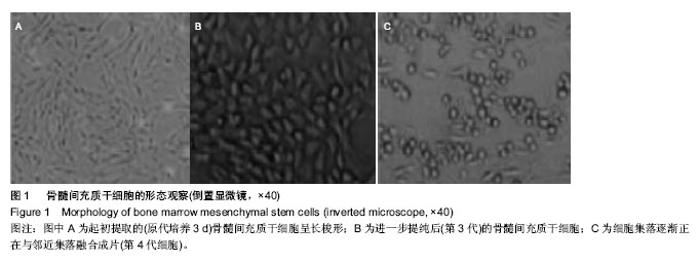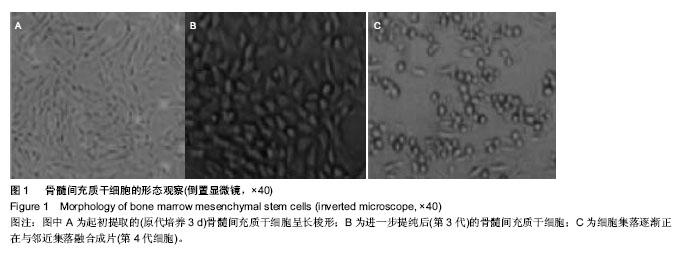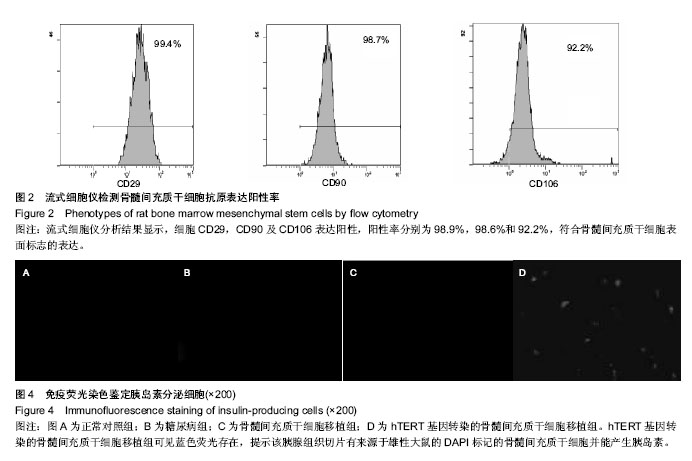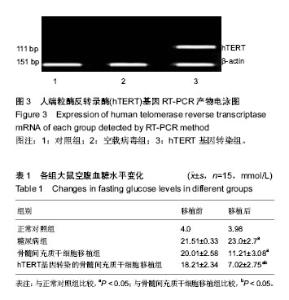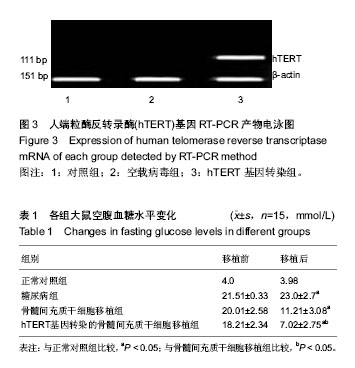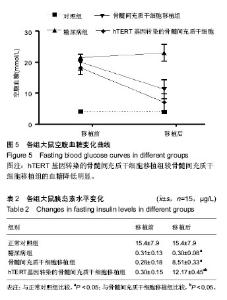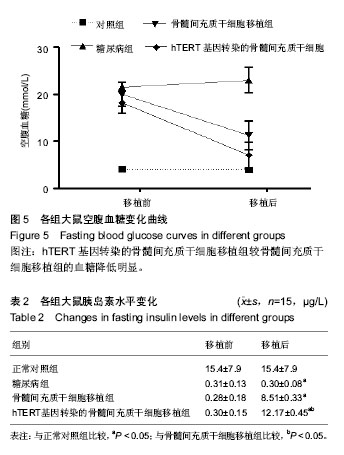| [1] |
Hou Jingying, Yu Menglei, Guo Tianzhu, Long Huibao, Wu Hao.
Hypoxia preconditioning promotes bone marrow mesenchymal stem cells survival and vascularization through the activation of HIF-1α/MALAT1/VEGFA pathway
[J]. Chinese Journal of Tissue Engineering Research, 2021, 25(7): 985-990.
|
| [2] |
Liang Xueqi, Guo Lijiao, Chen Hejie, Wu Jie, Sun Yaqi, Xing Zhikun, Zou Hailiang, Chen Xueling, Wu Xiangwei.
Alveolar echinococcosis protoscolices inhibits the differentiation of bone marrow mesenchymal stem cells into fibroblasts
[J]. Chinese Journal of Tissue Engineering Research, 2021, 25(7): 996-1001.
|
| [3] |
Geng Yao, Yin Zhiliang, Li Xingping, Xiao Dongqin, Hou Weiguang.
Role of hsa-miRNA-223-3p in regulating osteogenic differentiation of human bone marrow mesenchymal stem cells
[J]. Chinese Journal of Tissue Engineering Research, 2021, 25(7): 1008-1013.
|
| [4] |
Lun Zhigang, Jin Jing, Wang Tianyan, Li Aimin.
Effect of peroxiredoxin 6 on proliferation and differentiation of bone marrow mesenchymal stem cells into neural lineage in vitro
[J]. Chinese Journal of Tissue Engineering Research, 2021, 25(7): 1014-1018.
|
| [5] |
Zhu Xuefen, Huang Cheng, Ding Jian, Dai Yongping, Liu Yuanbing, Le Lixiang, Wang Liangliang, Yang Jiandong.
Mechanism of bone marrow mesenchymal stem cells differentiation into functional neurons induced by glial cell line derived neurotrophic factor
[J]. Chinese Journal of Tissue Engineering Research, 2021, 25(7): 1019-1025.
|
| [6] |
Pei Lili, Sun Guicai, Wang Di.
Salvianolic acid B inhibits oxidative damage of bone marrow mesenchymal stem cells and promotes differentiation into cardiomyocytes
[J]. Chinese Journal of Tissue Engineering Research, 2021, 25(7): 1032-1036.
|
| [7] |
Wang Shiqi, Zhang Jinsheng.
Effects of Chinese medicine on proliferation, differentiation and aging of bone marrow mesenchymal stem cells regulating ischemia-hypoxia microenvironment
[J]. Chinese Journal of Tissue Engineering Research, 2021, 25(7): 1129-1134.
|
| [8] |
Chen Junyi, Wang Ning, Peng Chengfei, Zhu Lunjing, Duan Jiangtao, Wang Ye, Bei Chaoyong.
Decalcified bone matrix and lentivirus-mediated silencing of P75 neurotrophin receptor transfected bone marrow mesenchymal stem cells to construct tissue-engineered bone
[J]. Chinese Journal of Tissue Engineering Research, 2021, 25(4): 510-515.
|
| [9] |
Jiang Tao, Ma Lei, Li Zhiqiang, Shou Xi, Duan Mingjun, Wu Shuo, Ma Chuang, Wei Qin.
Platelet-derived growth factor BB induces bone marrow mesenchymal stem cells to differentiate into vascular endothelial cells
[J]. Chinese Journal of Tissue Engineering Research, 2021, 25(25): 3937-3942.
|
| [10] |
Chen Ziyang, Pu Rui, Deng Shuang, Yuan Lingyan.
Regulatory effect of exosomes on exercise-mediated insulin resistance diseases
[J]. Chinese Journal of Tissue Engineering Research, 2021, 25(25): 4089-4094.
|
| [11] |
Sun Jianwei, Yang Xinming, Zhang Ying.
Effect of montelukast combined with bone marrow mesenchymal stem cell transplantation on spinal cord injury in rat models
[J]. Chinese Journal of Tissue Engineering Research, 2021, 25(25): 3962-3969.
|
| [12] |
Zhang Lishu, Liu Anqi, He Xiaoning, Jin Yan, Li Bei, Jin Fang.
Alpl gene affects the therapeutic effect of bone marrow mesenchymal stem cells on ulcerative colitis
[J]. Chinese Journal of Tissue Engineering Research, 2021, 25(25): 3970-3975.
|
| [13] |
Gao Shan, Huang Dongjing, Hong Haiman, Jia Jingqiao, Meng Fei.
Comparison on the curative effect of human placenta-derived mesenchymal stem cells and induced islet-like cells in gestational diabetes mellitus rats
[J]. Chinese Journal of Tissue Engineering Research, 2021, 25(25): 3981-3987.
|
| [14] |
Hao Xiaona, Zhang Yingjie, Li Yuyun, Xu Tao.
Bone marrow mesenchymal stem cells overexpressing prolyl oligopeptidase on the repair of liver fibrosis in rat models
[J]. Chinese Journal of Tissue Engineering Research, 2021, 25(25): 3988-3993.
|
| [15] |
Yi Meizhi, Luo Guanghua, Xiao Yawen, Hu Rong, Chen Xiaolong, Zhao Heng.
MRI findings of anatomical variations of the talus
[J]. Chinese Journal of Tissue Engineering Research, 2021, 25(24): 3888-3893.
|
